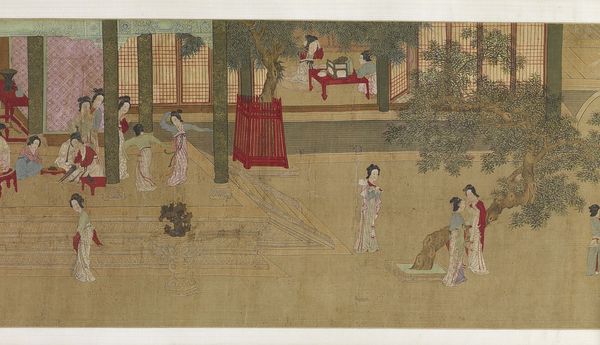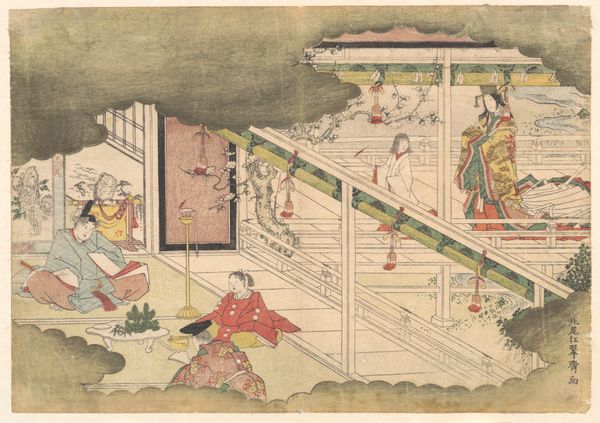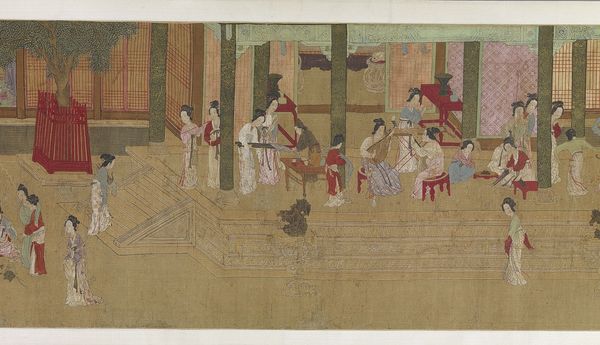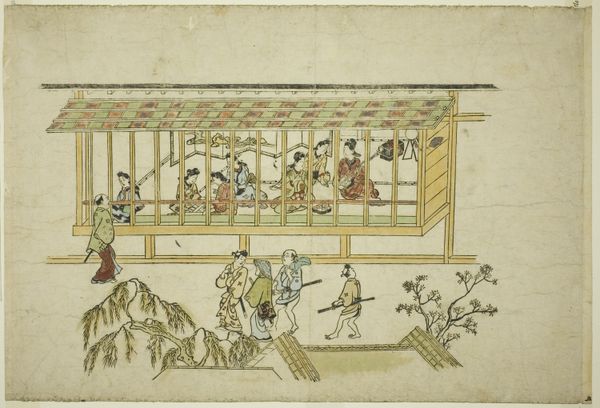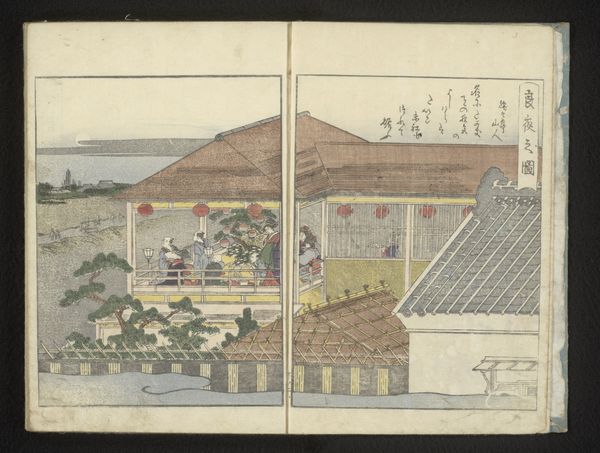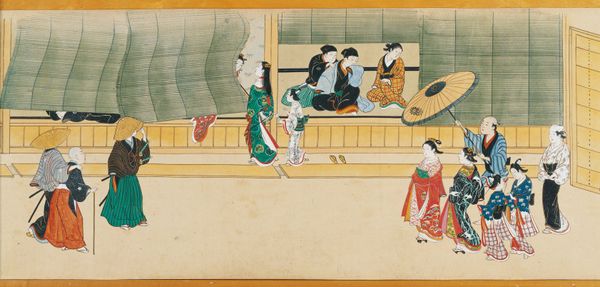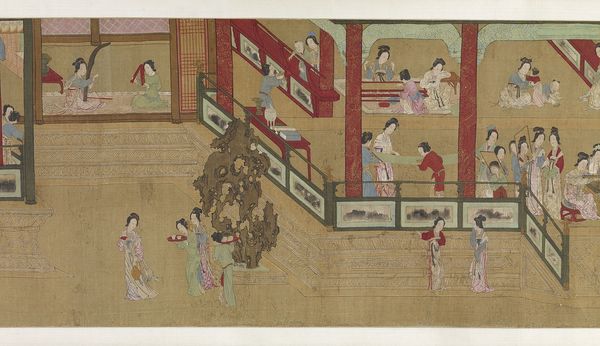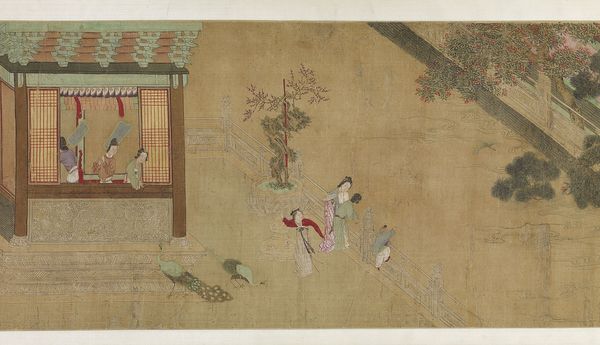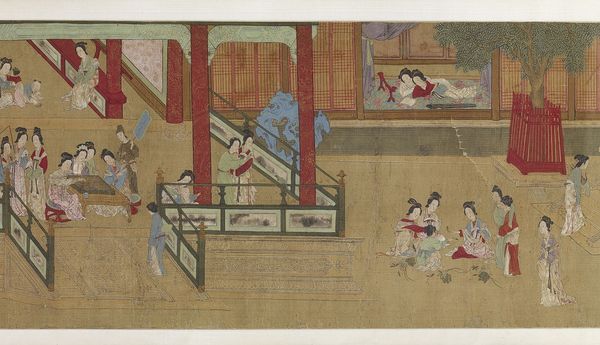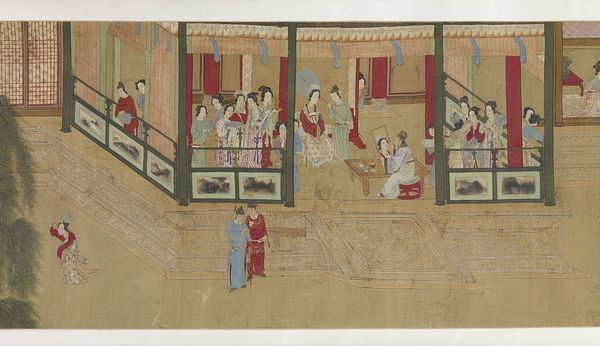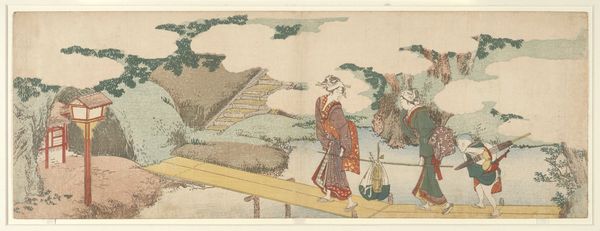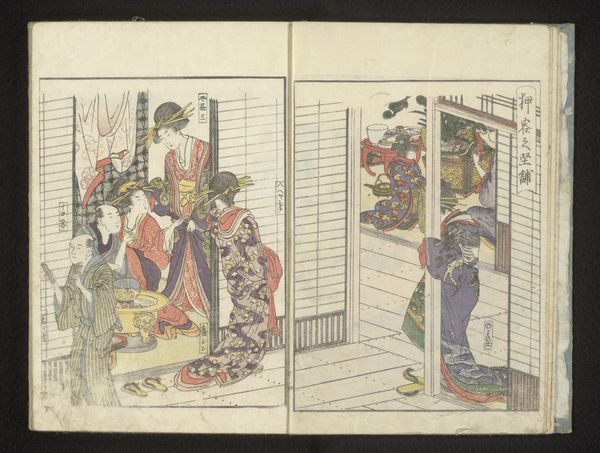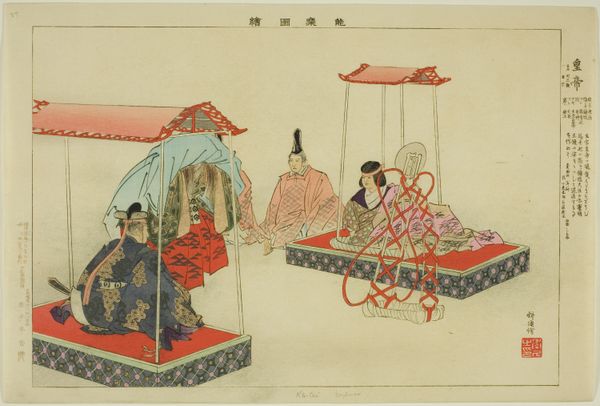
#
aged paper
#
toned paper
#
personal sketchbook
#
linocut print
#
ink drawing experimentation
#
pen-ink sketch
#
sketchbook drawing
#
watercolour illustration
#
sketchbook art
#
watercolor
Dimensions: height 257 mm, width 190 mm
Copyright: Rijks Museum: Open Domain
Curator: So this print, dating from 1790, is called "A court scene set in the snow", created by Kitagawa Utamaro, and is held at the Rijksmuseum. First impressions? Editor: Hmm, the colours are surprisingly muted given the subject matter. Almost pastel. It feels, I don't know, quietly unsettling. Curator: Unsettling how? Editor: The formality juxtaposed with the implied harshness of winter outside. The interior scene, framed by those cloud-like forms, almost feels like a stage. I mean, courtly life was performative to some degree, right? Who are we seeing represented here, and in what kind of power dynamic are they embedded? Curator: Utamaro was fascinated by the pleasure quarters and theatre districts of Edo-period Japan, but this seems like a glimpse into aristocratic life. Perhaps the print is meant to reveal those power dynamics you mentioned. It's as if he's chosen to emphasize not luxury or grandeur, but instead a sense of detachment, a kind of stillness behind the screens. The stark geometry of the building, and the flat perspective create a subtle tension. Editor: That stillness you're describing might speak volumes, given what we know about other depictions of courtly life. How radical it could be to quietly critique from within! The costumes signal rank and privilege. The careful rendering of each figure speaks to Utamaro's incredible skill. But these figures exist almost entirely on the surface: how are these elite figures participating in a societal framework that often disregards non-elite experiences? Curator: Exactly! You know, it makes me think of Noh theatre, where every gesture, every tilt of the head, is freighted with meaning. Are these figures playing a part? And how much control do they have over the roles they inhabit? Perhaps this snow scene suggests a sort of emotional chill. Editor: Perhaps the work also hints to an impending societal disruption as we consider wealth inequality during the Edo-period. We’ve talked before about who gets to make and see art – and what their place might be on a larger economic and political landscape, as well. Curator: And speaking of who gets to see it... I love the idea of this work eventually finding its way to a museum setting centuries later, inviting completely new ways of interpretation that Utamaro couldn't have imagined. Editor: It really makes you think about what else may be uncovered from similar works as societal expectations evolve, and hopefully become more equitable!
Comments
No comments
Be the first to comment and join the conversation on the ultimate creative platform.
